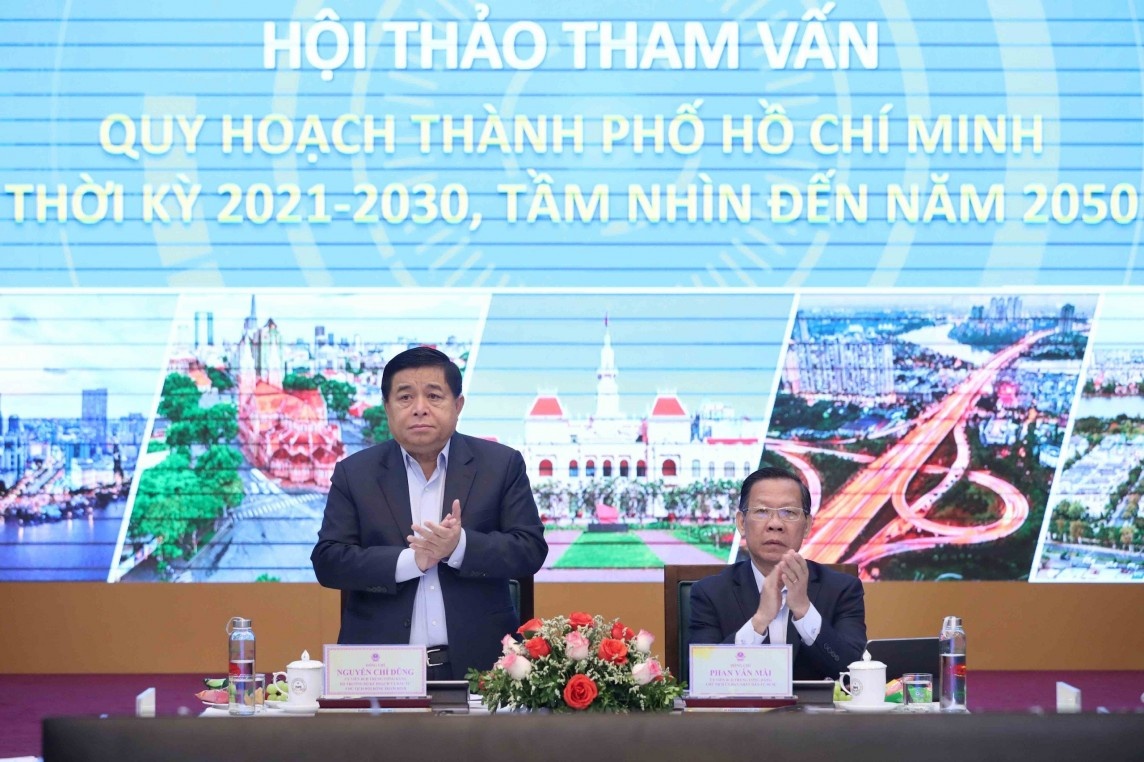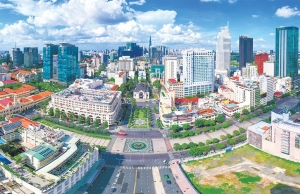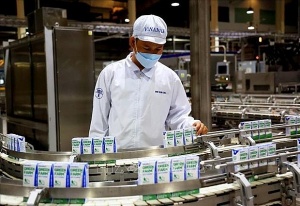MPI holds workshop to discuss planning for Ho Chi Minh City
 |
The Ministry of Planning and Investment held a workshop on February 28 to discuss draft planning for Ho Chi Minh City for the rest of the decade, with a vision to 2050.
Addressing the event, Minister of Planning and Investment Nguyen Chi Dung stated that Ho Chi Minh City is a special urban area, and although covering just 0.6 per cent of the country, it contributes nearly 20 per cent of GDP and 25 per cent of budget revenue.
However, Minister Dung noted that Ho Chi Minh City has been facing many difficulties as the city has yet to unlock its potential strengths. The GDP contribution rate is likely to have been just 16.5 per cent in 2023. Growth models and economic structures are slow to change, while growth quality and labour productivity are lower than the national averages.
“Other provinces and cities are moving forward, while Ho Chi Minh City is slowing down. In the near future, the advantage of being an international gateway will certainly decline," Minister Dung said, adding that it is vital to find a suitable direction for the city.
According to architect Tran Trong Hanh, head of the Ho Chi Minh City Planning Project, the city, with a population of nearly 10 million people, will undoubtedly become the first Vietnamese megacity. However, there is very little land left for exploitation.
“The current model of a unipolar megacity like Ho Chi Minh City is no longer appropriate. The city must develop under a multipolar, green, and smart model to ensure a sustainable environment. A new development model will also prevent mass migration and improve people's quality of life,” Hanh said.
Nguyen Dinh Cung, former director of the Central Institute for Economic Management, said that Ho Chi Minh City can set a target for higher growth. However, the bottleneck is the lack of institutional breakthroughs. It is feasible for the city to set a growth rate target of 10 per cent or even higher. To achieve this goal, the city needs to think outside the box, adopt a radical decision-making mechanism, and take drastic solutions.
He further pointed out that the city registered an average growth rate of 6.6 per cent in 2021–2025, 5.36 per cent in 2021, 9 per cent in 2022, and 5.81 per cent in 2023. Thus, the average growth rate for 2024–2025 must reach 11.8 per cent to double that of 2023. However, it will be difficult to achieve this target in the challenging economic environment.
 | Ho Chi Minh City takes a green path Ho Chi Minh City is choosing green growth as its future development strategy, seeking funding for almost 30 priority projects to help achieve economic prosperity and environmental sustainability. |
 | Ho Chi Minh City: a rising hub for high-tech manufacturing Vietnam is currently one of the most attractive destinations for investors in the semiconductor sector due to advantages such as a large reserve of silica and rare earth metals (used for chip manufacturing), low labour costs, favourable geographical location, and government incentives. |
 | HCM City lures green investments to boost sustainable development Ho Chi Minh City, Vietnam’s biggest economic hub, is working to lure both domestic and foreign green investments, towards sustainable development. |
What the stars mean:
★ Poor ★ ★ Promising ★★★ Good ★★★★ Very good ★★★★★ Exceptional
 Tag:
Tag:
Related Contents
Latest News
More News
- EVN launches major power infrastructure projects nationwide (December 19, 2025 | 18:17)
- VAL inaugurates second production line to meet domestic animal feed demand (December 19, 2025 | 16:37)
- Sun Group pioneers urban tram system in Phu Quoc (December 19, 2025 | 15:00)
- Seven major projects launched to drive Hanoi’s next growth phase (December 19, 2025 | 14:00)
- Securing capital and efficiency for Vietnam’s 2026-2030 growth ambitions (December 17, 2025 | 10:00)
- Vietnam bucking trend in the global M&A landscape (December 16, 2025 | 14:20)
- HDS Summit spotlights Vietnam’s rising role in regional supply chains (December 16, 2025 | 08:00)
- Kolon signs $48 million airbag supply deal with Autoliv (December 15, 2025 | 18:14)
- National Assembly approves Vinh–Thanh Thuy expressway project (December 15, 2025 | 18:02)
- Quang Tri green-lights $1.59 billion LNG-fired power project (December 15, 2025 | 17:59)






















 Mobile Version
Mobile Version